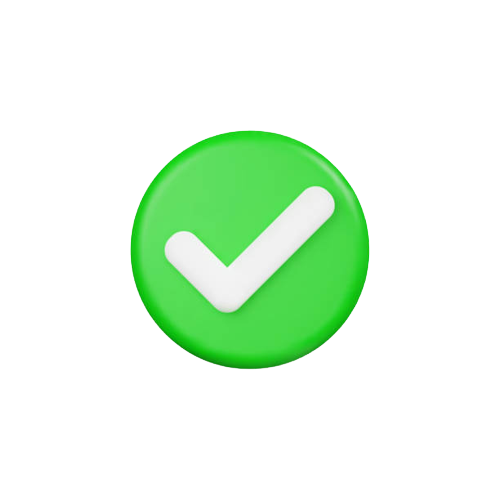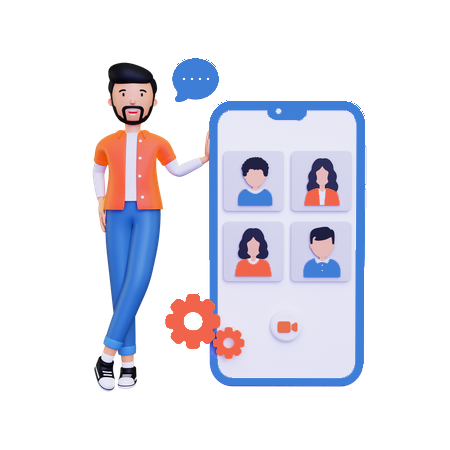Design Registration in India: An Overview
Design registration is a legal process that provides protection to the visual appearance of a product, encompassing its shape, configuration, ornamentation, or pattern. This form of intellectual property protection is crucial for designers and businesses to safeguard their unique and innovative designs from unauthorized use by others.
Importance of Design Registration:
Exclusive Rights: Design registration grants the owner exclusive rights to use, make, sell, and distribute the registered design. This exclusivity helps prevent others from replicating or imitating the design without permission.
Market Differentiation: In a competitive marketplace, consumers often make purchasing decisions based on the visual appeal of a product. Design registration allows businesses to differentiate their products from competitors, creating a distinct market identity.
Asset Protection: A registered design becomes an intangible asset for the owner. This asset can be licensed, sold, or used as collateral, contributing to the overall value of the business.
Legal Recourse: Design registration provides a legal basis for taking action against infringers. In case of unauthorized use, the owner can pursue legal remedies such as injunctions, damages, or settlements.
What is Design Registration?
Design registration refers to the process of officially recording a design with the relevant intellectual property office. This registration is typically granted for a specific period, offering legal protection to the visual aspects of the design.
Scope:
The scope of design registration covers the overall appearance of a product, including its shape, surface ornamentation, colour, and any combination of these elements. It is not concerned with the functionality of the product but focuses on its aesthetic aspects. This distinguishes design registration from other forms of intellectual property protection such as patents, which safeguard inventions and technical innovations.
Eligibility Criteria for Design Registration
The eligibility criteria for design registration vary somewhat across jurisdictions, but generally, they share common principles. Here are key elements commonly considered for design registration eligibility:
Novelty:
Designs eligible for registration must be novel and not identical or similar to existing designs. The design should not have been disclosed or made public anywhere in the world before the filing date of the application.
Originality:
The design should be an original creation of the applicant. It must not be a mere imitation or a common design in the relevant industry.
Applicability to Articles:
Design registration typically applies to designs that can be applied to an article, i.e., an object that has a practical function. The design must be integrally connected to the article.
Industrial Applicability:
Designs eligible for registration are generally required to have industrial applicability, meaning they should be suitable for mass production in an industrial or handicraft process.
Non-Functional Features:
Design registration focuses on the aesthetic or ornamental aspects of a product. Functional features are usually not eligible for design protection, as they fall under the purview of patents.
Exclusions:
Certain designs may be excluded from registration, such as designs that are contrary to public order or morality, designs dictated solely by technical function, or designs that are primarily functional.
Duration of Protection:
Design registration provides protection for a limited period, typically ranging from 10 to 25 years, depending on the jurisdiction. After this period, the design usually enters the public domain.
Application Requirements:
Applicants are required to submit a clear representation of the design, along with any necessary documentation and fees. The application should meet the formal requirements specified by the relevant intellectual property office.
Priority Claim:
In some jurisdictions, applicants may have the option to claim priority based on an earlier application filed in another country. This is beneficial for international applicants seeking protection in multiple jurisdictions.
Designer's Right:
The right to register a design is often initially vested in the designer. In cases where the design is created during employment, the rights may belong to the employer unless otherwise agreed.
Distinction from other types of intellectual property
Design registration is distinct from other types of intellectual property, such as patents, trademarks, and copyrights, based on the specific aspects of intellectual creativity each one protects.
Patents:
Design Registration: Protects the visual appearance or ornamental aspects of a product.
Patents: Protects new and useful inventions, processes, methods, or compositions of matter.
Functionality: Design registration focuses on aesthetics, while patents are concerned with functionality and technical innovations.
Trademarks:
Design Registration: Protects the visual design of a product.
Trademarks: Protects symbols, names, or slogans that distinguish goods or services in the marketplace.
Identification: Design registration is about the visual identity of a product, while trademarks are about brand identification.
Copyrights:
Design Registration: Protects the visual design of a product.
Copyrights: Protects original works of authorship, such as literary, artistic, and musical works.
Expression vs. Idea: Design registration focuses on the visual expression of an idea in a product, while copyrights protect the broader expression of various forms of creative works.
Utility Models:
Design Registration: Primarily concerned with the visual appearance of a product.
Utility Models: Protects new and useful aspects of a product that are not necessarily inventive, often providing a shorter and simpler registration process compared to patents.
Innovation Level: Design registration emphasizes aesthetics, while utility models focus on practical utility.
Design Registration: Steps involved in the registration process
The process of design registration typically involves several key steps. While the exact procedure can vary by jurisdiction, here is a general overview of the steps involved in registering a design:
Pre-Filing Search:
Before filing a design registration application, it's advisable to conduct a thorough search to ensure that the proposed design is novel and doesn't conflict with existing designs. This can help avoid potential issues during the registration process.
Preparation of Application:
Prepare the design registration application, including clear representations or drawings of the design, along with any required documentation. The application should also include details about the applicant and, if applicable, any priority claims based on earlier applications.
Filing the Application:
Submit the design registration application to the relevant intellectual property office. Pay the necessary filing fees, and ensure that the application meets all formal requirements. Some jurisdictions may allow online filing, while others may require physical submission.
Examination:
The intellectual property office examines the design application to ensure it complies with the legal requirements. This examination may include a review of novelty, originality, and industrial applicability. The applicant may be required to respond to any objections raised during this stage.
Publication:
Once the design application is deemed compliant, it is typically published in an official journal or database. The publication provides notice to the public and allows interested parties to oppose the registration if they believe the design infringes on their rights.
Opposition (if applicable):
In some jurisdictions, a period is provided after publication for third parties to oppose the design registration. If there are no oppositions or if oppositions are unsuccessful, the registration process continues.
Registration and Certificate Issuance:
If there are no impediments, and the design meets all legal requirements, the intellectual property office will proceed with the registration. A certificate of design registration is issued to the applicant, confirming their exclusive rights to the registered design.
Renewal:
Design registrations are typically valid for a limited period, after which they may be renewed upon payment of renewal fees. It's the responsibility of the design owner to ensure timely renewal to maintain protection.
Enforcement:
With the design successfully registered, the owner gains the legal right to enforce their exclusive rights. This may involve taking legal action against unauthorized use or infringement of the registered design.
Required Documents for Design Registration
The required documents for design registration can vary depending on the jurisdiction, but here is a general list of documents commonly needed for the design registration process:
Application Form:
A completed design registration application form was provided by the relevant intellectual property office. The form typically includes details about the applicant, the design, and any priority claims.
Drawings or Representations:
Clear and detailed drawings, illustrations, or representations of the design. These visuals should accurately depict the unique features of the design and may be required in a specific format or size.
Description of the Design:
A written description that explains the features of the design, highlighting its distinctive elements. This description helps the examiner understand the design's novel and original aspects.
Priority Documents (if applicable):
If the applicant is claiming priority based on an earlier application filed in another country, the priority document may be required. This document establishes the filing date of the earlier application.
Power of Attorney (if required):
In some jurisdictions, a power of attorney may be required, especially if the application is filed through a legal representative or agent. This document authorizes the representative to act on behalf of the applicant.
Proof of Right to Apply (if required):
Documentation demonstrating that the applicant has the right to apply for the design registration. This is particularly relevant in cases where the design is created during employment, and the rights may belong to the employer.
Details of Priority Claim (if applicable):
If claiming priority based on an earlier application, provide specific details about the prior application, including the filing date, application number, and the country where it was filed.
Payment of Fees:
Proof of payment for the filing fees associated with the design registration application. The amount and method of payment can vary by jurisdiction.
Assignment Deed (if applicable):
If the rights to the design have been assigned or transferred from the original creator to the applicant, an assignment deed may be required to establish the legal basis for the application.
Declaration of Inventorship or Ownership:
A declaration confirming the inventorship or ownership of the design. This document may be required to establish the applicant's right to register the design.
Benefits of Design Registration
The registration of a design offers a range of benefits to the owner, providing legal protection and advantages in the commercial and competitive landscape. Here are the key benefits of design registration:
Exclusive Rights:
Design registration grants the owner exclusive rights to use, make, sell, and distribute the registered design. This exclusivity helps prevent others from reproducing or imitating the design without permission.
Market Differentiation:
A registered design allows businesses to distinguish their products from competitors in the marketplace. The unique and protected design becomes a valuable tool for creating a distinct brand identity, fostering customer recognition, and increasing market share.
Asset Value:
A registered design becomes an intellectual property asset, contributing to the overall value of a business. This asset can be licensed, sold, or used as collateral for securing loans, providing additional revenue streams and financial flexibility.
Legal Recourse:
In the event of unauthorized use or infringement, the owner of a registered design has legal grounds to take action against the infringing party. This may include seeking injunctions, damages, or negotiating settlements, providing a robust mechanism for enforcement.
Competitive Advantage:
Design registration provides a competitive advantage by offering legal protection for the unique visual aspects of a product. This protection can be particularly crucial in industries where product design plays a significant role in consumer purchasing decisions.
Enhanced Marketing Opportunities:
Registered designs can be highlighted in marketing materials and promotional efforts, emphasizing the exclusivity and originality of the products. This can enhance the perceived value of the products in the eyes of consumers.
Global Protection:
Design registration can be pursued internationally through mechanisms like the Hague System for the International Registration of Industrial Designs. This allows businesses to secure protection for their designs in multiple countries using a streamlined process.
Deterrent Effect:
The existence of a registered design can act as a deterrent, discouraging potential infringers from copying or imitating the design due to the legal consequences they may face.
Innovation Incentive:
Knowing that their designs are legally protected, designers and businesses are encouraged to invest in and innovate new and distinctive designs, fostering creativity and advancement in product development.
Enforceable Design Rights:
Unlike unregistered designs, registered designs provide a more robust and enforceable form of protection. The registration certificate serves as concrete evidence of ownership and facilitates legal action if necessary.
Design Registration vs. Copyright: Key Differences:
While both design registration and copyright protection relate to the creative aspects of designs, there are key differences between the two:
Scope of Protection:
Design Registration: Protects the visual appearance or ornamental features of a product.
Copyright: Protects original works of authorship, including literary, artistic, and musical works. While some designs may qualify for both design registration and copyright, copyright protection is broader and covers various forms of creative expression.
Requirements for Protection:
Design Registration: Requires novelty and originality, focusing on the aesthetic aspects of the design.
Copyright: Requires originality and fixation in a tangible medium. Copyright protection is automatic upon creation, without the need for registration.
Duration of Protection:
Design Registration: Limited duration, typically ranging from 10 to 25 years, depending on the jurisdiction.
Copyright: Generally lasts for the life of the creator plus a certain number of years (e.g., 70 years in many jurisdictions) and is not dependent on registration.
Infringement Actions:
Design Registration: Infringement actions are based on the unauthorized use of the registered design.
Copyright: Infringement actions cover a wider range of uses, including reproduction, distribution, public display, and adaptation of the copyrighted work.
When to Choose Design Registration over Copyright:
Focus on Aesthetic Aspects:
Choose design registration when the primary concern is protecting the unique visual appearance or ornamental features of a product.
Limited Duration Acceptable:
Choose design registration when a limited period of protection (typically 10 to 25 years) is sufficient for the commercial life of the product.
Desire for Official Certification:
Choose design registration when official certification and a tangible legal document (registration certificate) are desired to establish ownership and exclusivity.
Prevention of Copying in the Market:
Choose design registration when the goal is to prevent others from directly copying or imitating the design in the marketplace.
Validity of Design Registration:
The validity of design registration is limited to a specified period, typically ranging from 10 to 25 years, depending on the jurisdiction. After this period, the design registration expires, and the design enters the public domain, becoming freely available for use by others.
Cancellation of Design Registration:
Design registrations can be subject to cancellation under certain circumstances. Common reasons for cancellation include:
Non-Renewal: If the owner fails to renew the registration by paying the required renewal fees, the registration may expire.
Invalidation Proceedings: Third parties can initiate proceedings to invalidate a design registration, typically on grounds such as lack of novelty, prior public disclosure, or insufficient originality.
Voluntary Surrender: The owner may choose to voluntarily surrender the design registration, either to remove it from the register or to replace it with a new registration.
Revocation Actions: In some cases, design registrations can be revoked if certain conditions are not met, such as non-use of the design or failure to fulfil other legal requirements.




